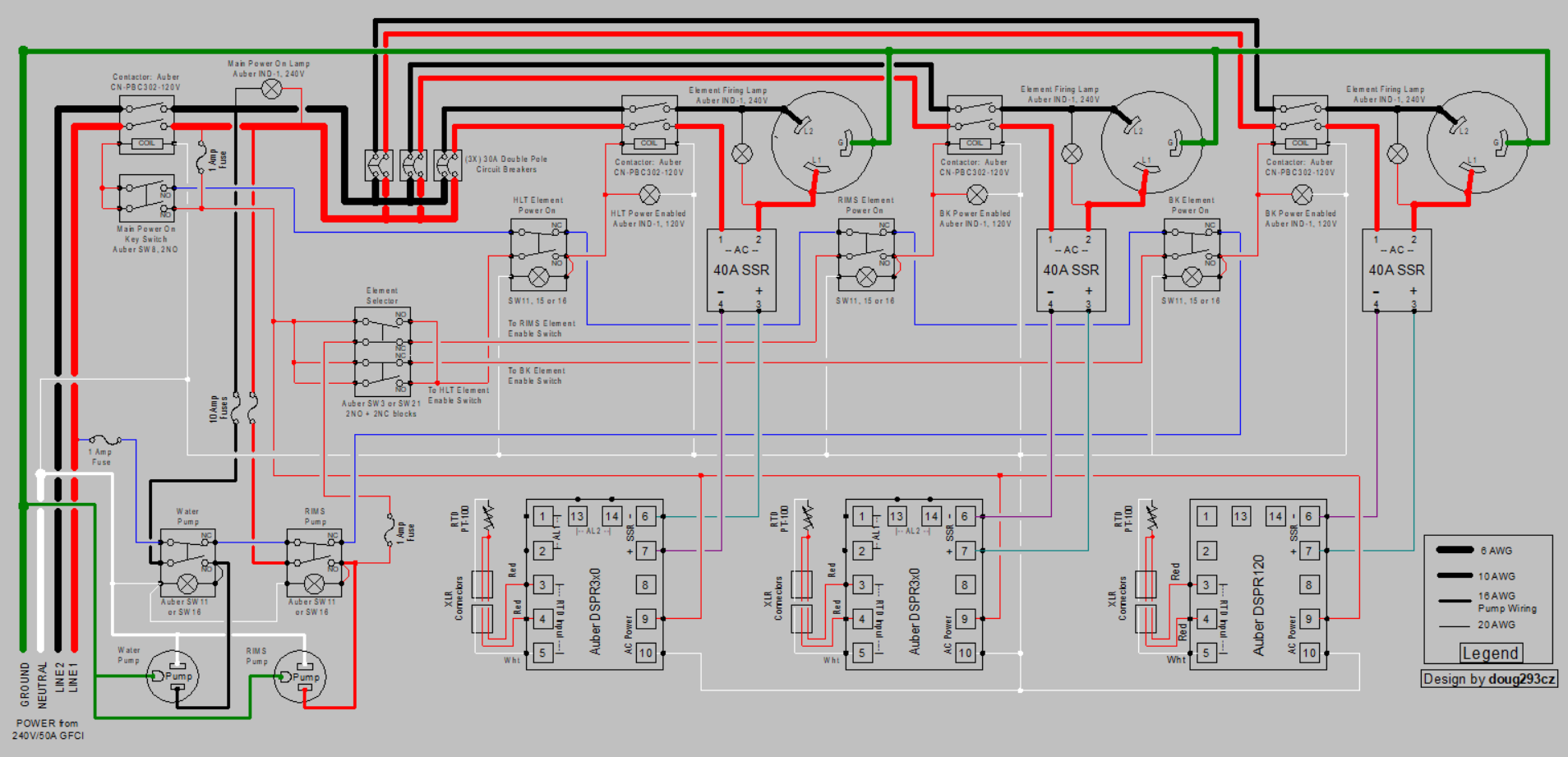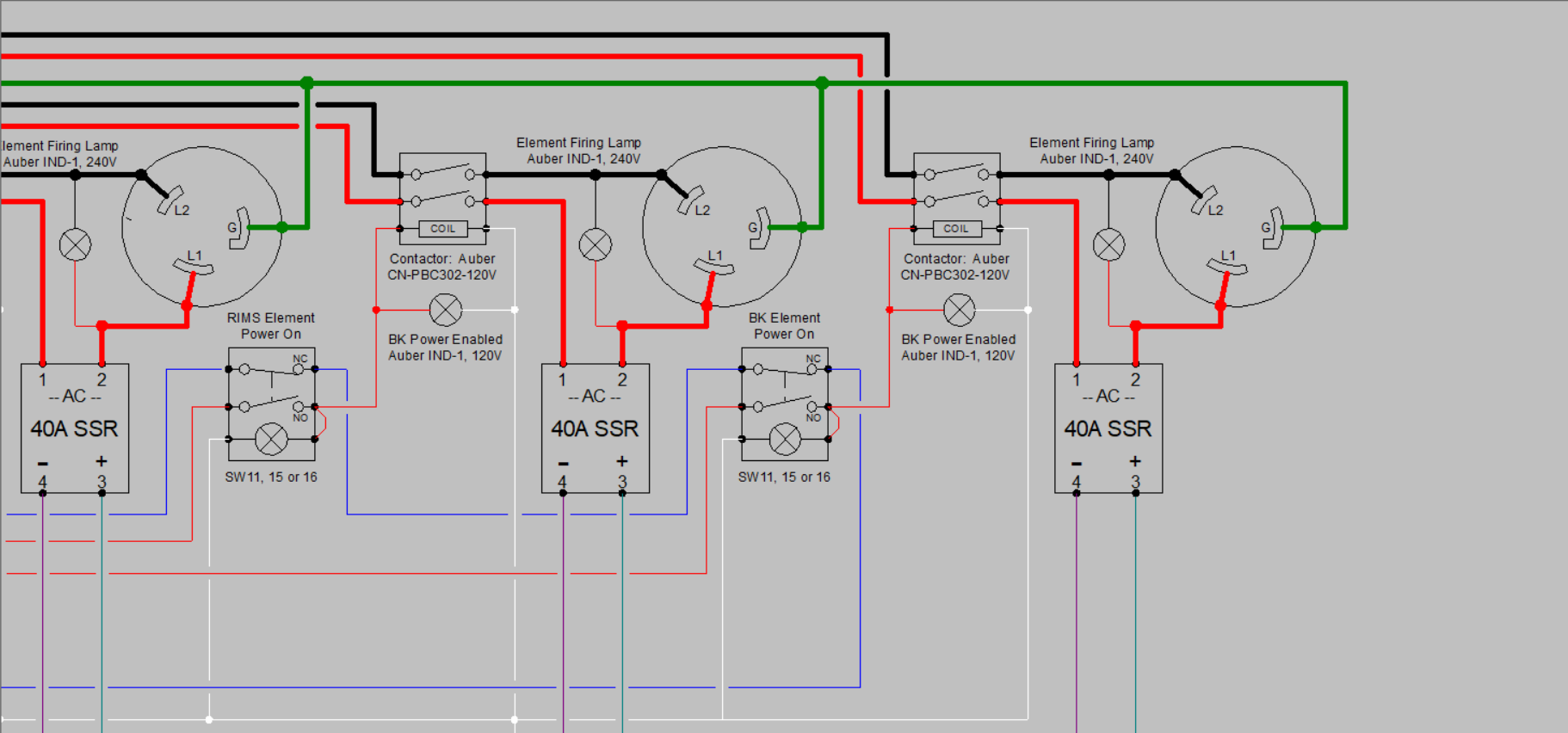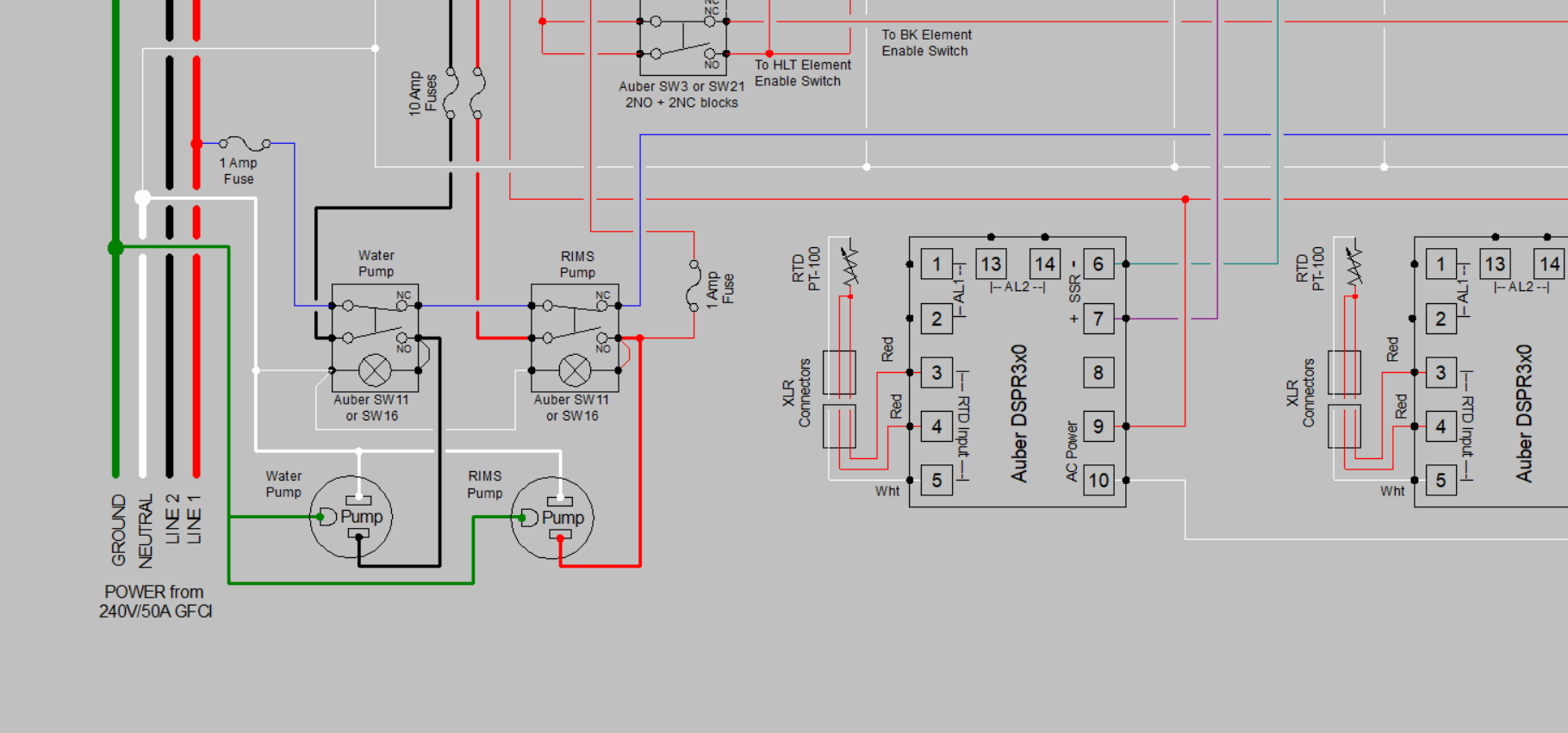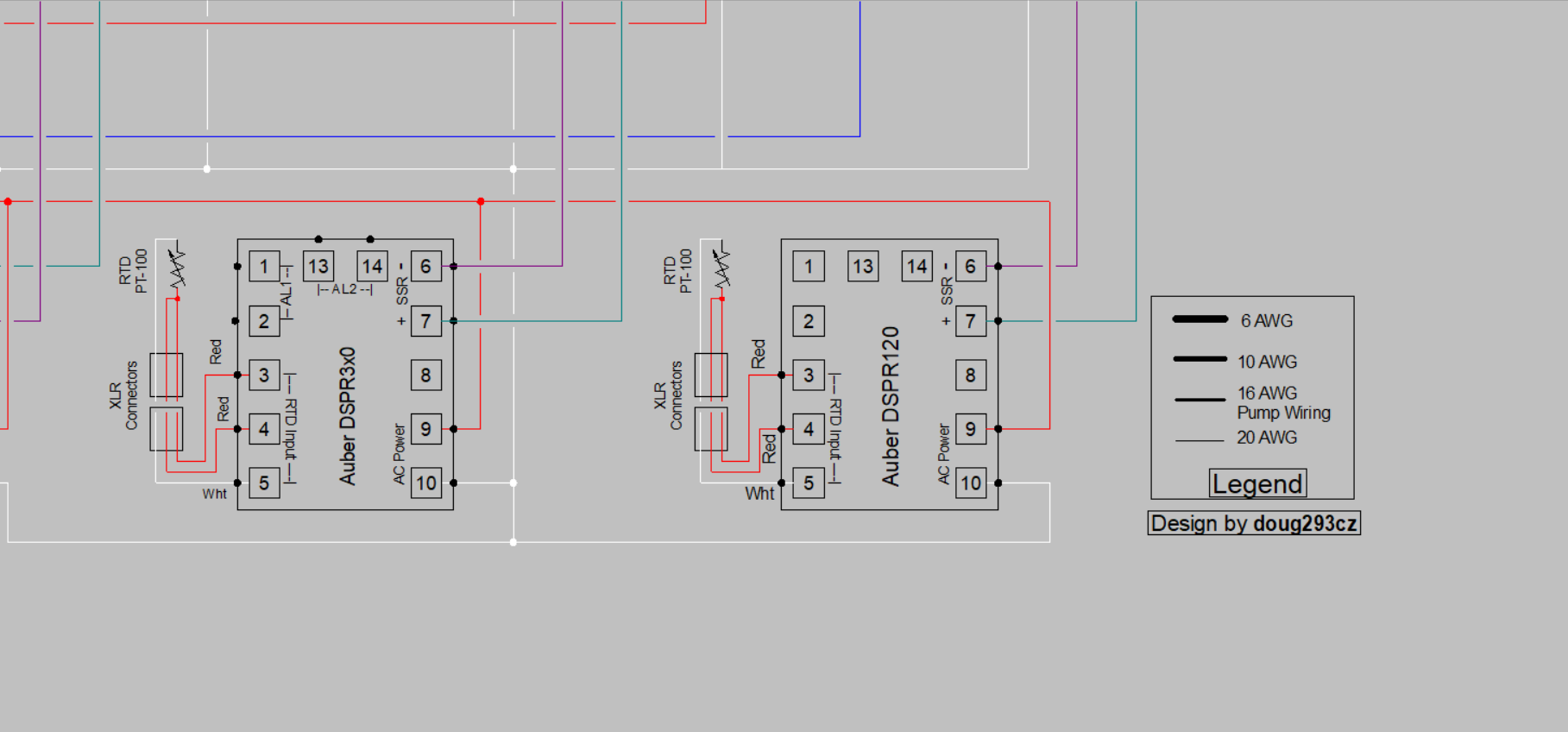Ok, here's my critique of your original schematic:
Many of the components are wired incorrectly. I'll list those with mistakes below:
- Contactors: These components have only 6 connections: two power in terminals for hot1 and hot2, two power out terminals for the switched hot1 and hot2, and two actuating coil terminals. For a 120V coil, one terminal is connected to a switched hot, and the other is connected to neutral. For a 240V coil, one terminal is connected to a switched hot, and the other to the other hot (which may be switched or unswitched.) These components to not have to be grounded since they are inside a grounded metal or non-conductive enclosure. Grounding may occur via a DIN rail (if the contactor is designed for this) or open frame contactors may be grounded to the metal mounting plate via the mounting screws.
- LED lights (or any other type of light): These are never wired in series with another load. 120V lights are connected between a hot and neutral, and 240V lights are connected between hot1 and hot2. The hot wires are usually switched.
- Heating Elements: Heaters have two power connections and a ground connection. 240V heaters have connections to hot1, hot2, and ground, but no neutral connection. 120V heaters have connections to hot, neutral, and ground, but no connection to the second hot. Therefore they should be connected with three bladed, rather than four bladed, plugs (NEMA L6-30 rather than NEMA L14-30.)
Now on to comments about your design:
You don't need the 63A circuit breaker in your panel, since you already have a 60A GFCI breaker in your SPA panel. Your main power feed should use 4AWG or 6AWG wire, depending on the temperature rating of the wire. Romex type wire (typically used for residential wiring) is only rated to 60°C, so 4AWG is required. Cable types starting with "TH"... are rated to 75°C or 90°C, so 6AWG could be used.
Once inside your panel, you're going to want to use smaller wires because they are cheaper, and much easier to work with. Then, wherever you reduce the wire size, you will need a breaker or fuse appropriate for the specific wire size. 30A-32A breakers for 10AWG wire, 20A breakers for 12AWG wire, 15A breakers for 14AWG wire, and 10A breakers for 16AWG wire.
4500W heating elements will draw 18.75A, so will need either 12AWG wire and 20A breakers, or 10AWG wire and 30A (or 32A) breakers. A 2500W (@240V) element will draw 10.4A, so could be wired with 14AWG and 15A breaker, or 12AWG/20A, or 10AWG/30-32A.
Typical 120V brewing pumps (RipTide, Chugger, March) draw less than 1.5A, so you can run two pump circuits from a single 10A breaker/fuse with 16AWG (or larger) wire.
PIDs, contactor coils, and LED indicator lights all take just a few milliamps each, so you can usually run all those circuits off a single 1 - 5A fuse, using 18AWG or 16AWG wire.
Don't bother with separate power switches and indicator lights for the PIDs. The PIDs should be connected to the main (switched) power bus in the panel thru an appropriate fuse. They will all power on when the main power is turned on, and the front panel lights on the PIDs will tell you they are powered up.
You need switches for each of the element power contactors. You should probably use lighted switches, or discrete indicator lamps, that light up when the switch and contactor are on.
Since this is a RIMS system, the power input to the RIMS contactor control switch should come from the RIMS pump switch. This prevents the RIMS element from being powered unless the RIMS pump is on. I consider this an absolutely necessary interlock to prevent a common operator error.
I highly recommend adding element firing indicator lights, that tell you when power is actually being applied to the elements. The firing LEDs on the front of the PIDs only tells you that the PIDs think they are telling the SSR to turn on, not that they are actually working. The discrete element firing lights tell you that things are actually working. They will also tell you if an SSR gets stuck in the "on" state (the most common SSR failure mode.)
DSPR110s are obsolete, and have been replaced by the DSPR120. If you already have the 110s they are still fine to use, but the terminal assignments are different than for the current model DSPRs.
If you use a metal enclosure, the enclosure must be grounded. Many enclosures come with a welded, threaded stud for this purpose. If you don't have pre-existing grounding studs, you can use machine screws thru holes in the enclosure. Paint should be removed from where the screw head and nut make contact, and star washers should be used as well. Both the main body and door need to be grounded.
Most of the components inside the enclosure do not need to be individually grounded. Exceptions are any component that has a dedicated ground connection, and the metal base plates of the SSRs (since the heatsinks for them will be exposed outside the enclosure.)
That's all I can think of right now.
Brew on








